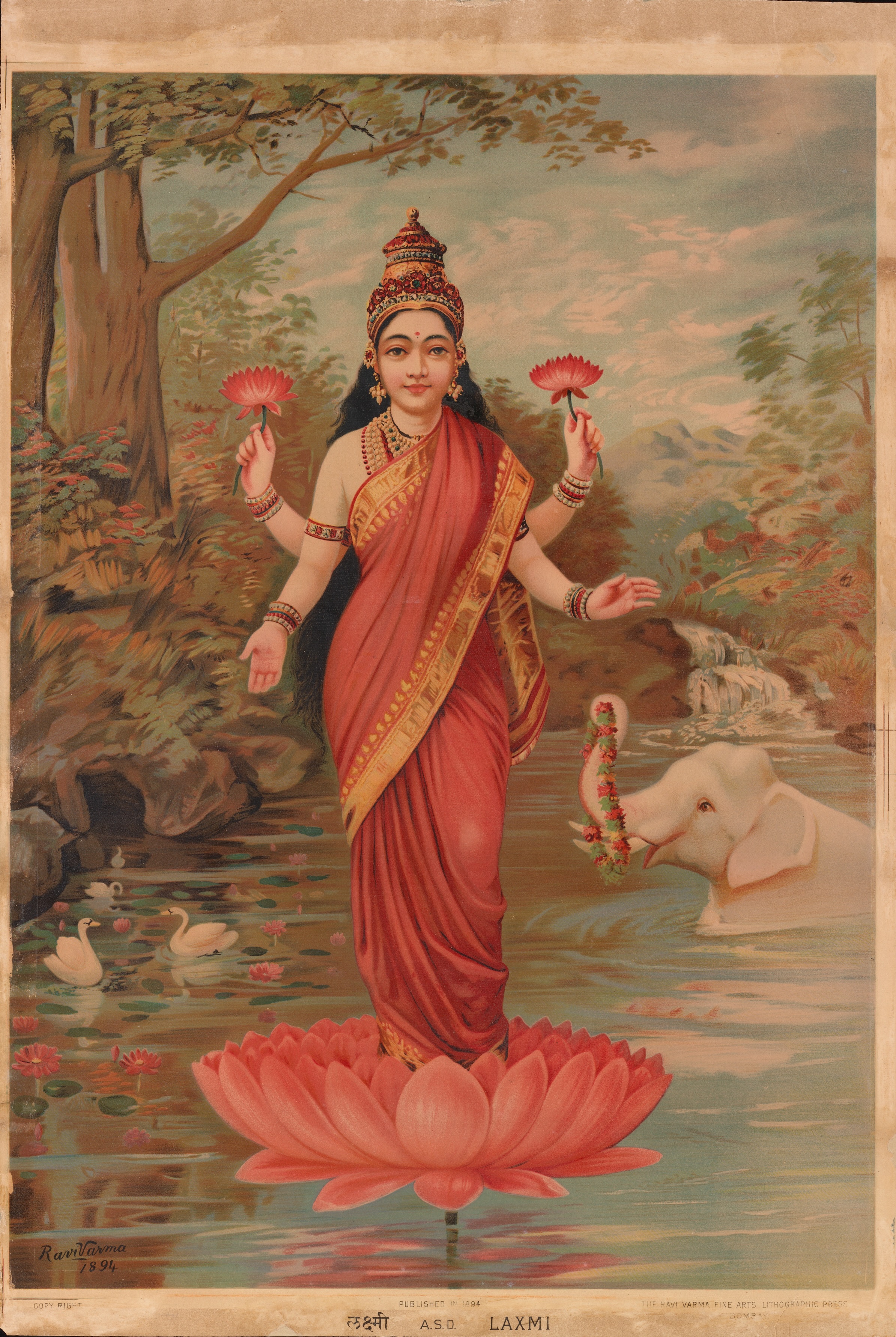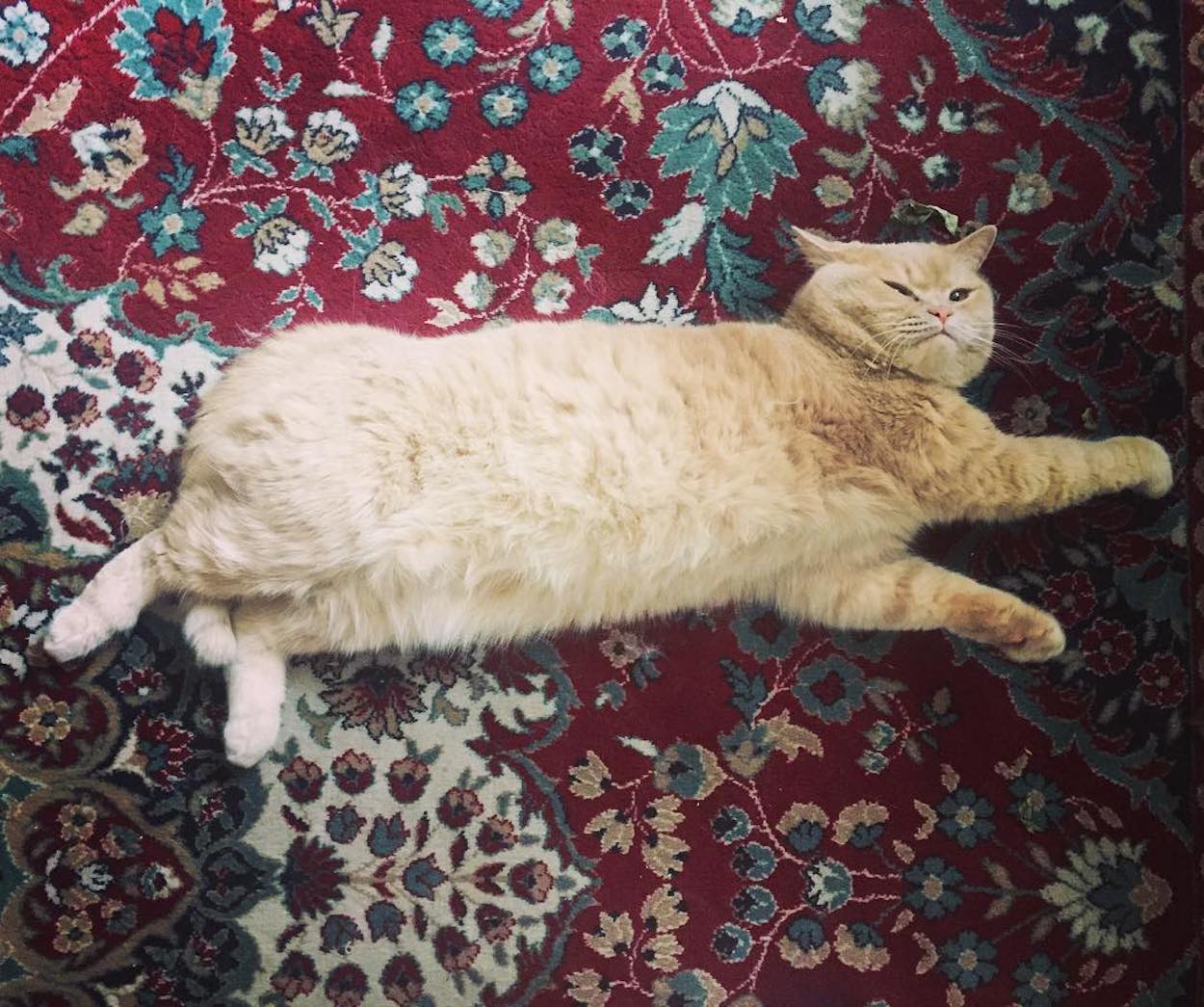The image of Lakshmi standing on a lotus is one of the most iconic early lithographs of Hindu deities. Its popularity is due not only to the fame of Ravi Varma, an Indian painter renowned for his high-quality prints, but also to its long production history—simplified versions of the print continued to be made well into the 1920s. This print is based on a series of oil paintings Varma created for various patrons. The painterly quality of the lithograph reflects its origins in oil painting, a medium that gained popularity in late 19th-century India, with Ravi Varma as one of its leading practitioners.
According to scholar Mark Barron, this print likely dates to 1894, the inaugural year of Ravi Varma Press. He attributes this to several factors: the use of a stippling technique achieved with the edge of a brush, the oversized format, the uneven texture of the paper, and the minimal or absent varnish. Another distinguishing feature is the extensive use of colors, each requiring a separate lithographic stone, and the pastel color palette, known for its short lifespan.
P.S. Do you want to learn how to appreciate art you're not familiar with? Check out our free online course. :)
P.P.S. Lakshmi is the goddess of wealth, prosperity, and good fortune, and the wife of another Hindu god, Vishnu. Discover various portrayals of Lakshmi in art history!


 Unknown Artist
Unknown Artist